In the other article, we have discussed the classification of gears according to the different criteria, but in this article, we are going to discuss the different types of gears irrespective of these criteria.
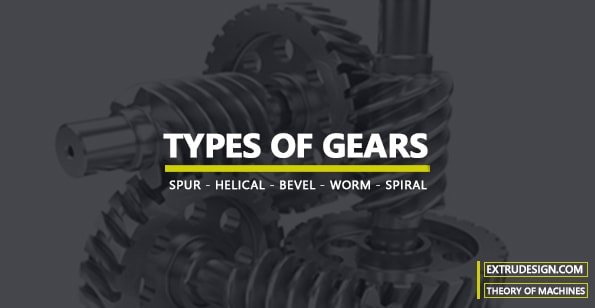
The gears may be classified as different types according to the shaft arrangement (Parallel, intersecting, non-parallel &non-intersecting), according to the gear velocity (Low velocity, medium velocity, high velocity), according to the type of meshing (Internal, External, rack and pinion) like we have discussed in the previous article. In this article, we discuss more of the gear classification according to the gear tooth profiles.
Different Types of Gears
Following are the different types of gears according to the tooth profiles and type of messing combined.
- Spur Gears
- Helical Gears
- Bevel Gears
- Worm Gears
- Spiral Gears
- Rack and pinion
- Planetary Gears (Epicyclic gearing)
Spur Gears
As you can see spur gear shown below picture, the gear tooth profiles will be straight and parallel to the shaft axes, called as the spur gears. These are the most widely used gears among the industries. The manufacturing of these gears profiles is less complicated than the other gear tooth profiles as we mentioned the list above.
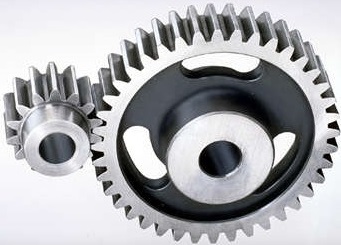
Since they have a straight tooth profile and shaft axes are parallel, they do not have any thrust loads. When the two gears have meshed, the larger one called “Gear” and the smaller one designated as the “pinion”.
Helical Gears
Similar to the spur gears, this gears also used for the parallel shaft connection, but the gear tooth profiles will be inclined instead of the straight. This gear looks like the tooth winded on the cylinder, That is why we call them helical gears. These helical gears can be available in both left-hand twisting and right-hand twisting.
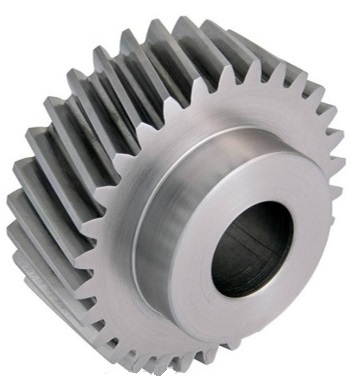
These helical gears are results in less noise and used for high-speed transmissions. Due to the helical tooth, these will have the thrust loads.
Bevel Gears
When the shaft axis is intersected, and they need to transmit the power, then cone-shaped gears will be used as shown in the below picture. Those are called the bevel gears. Their tooth profiles will be formed on the conical surface.
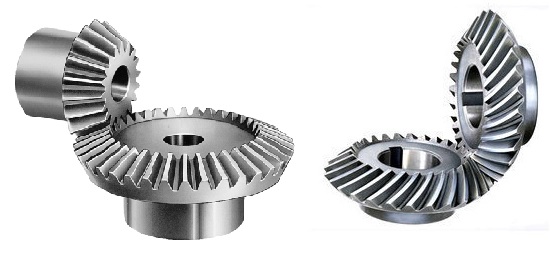
As we can see above these bevel gears also available with the different tooth profile orientations. In the above picture, one is Straight Bevel Gear, and another one is spiral Bevel gear. And helical bevel gears, Miter bevel gears, Zero bevel gears, and Hypoid bevel gears also available in this cone shaped gears.
Worm Gears
A screw-shaped tooth profile will be profiled on one gear called “Worm” and on other gear will have grooved profiles along its surface as the gear tooth called “Worm wheel”.
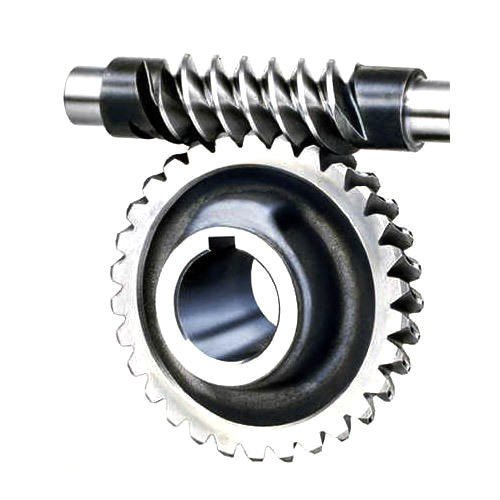
The manufacturing of these profiles is complicated than the other type of gear tooth since the tooth profiles need to have fine surface roughness to reduce surface friction. We need to use hard material for the worm and softer material for the worm wheel. These gears also have less noise and can run very smooth.
Spiral Gears
Spiral gears will have the gear tooth profile in a curved profile. With these gears, we can connect two non-coplanar shafts together. As we have already mentioned above regarding the Spiral bevel Gears, these gears also can be used for the coplanar shaft connections.
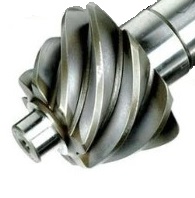
These gears also have very less noise and less vibration while transmitting the torque. We can see these gears most often in the vehicle differential gear system.
Rack and pinion
The rack is a straight bar with the gear tooth on its edge and the pinion is the spur gear meshed with it. Check out the Rack and pinion gears picture shown below.
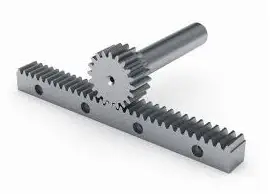
Rack and pinion gears are used to convert the linear motion into the rotational motion and vice versa. The pinion is a simple spur gear. The most general application of this rack and pinion gearing is the lockers.
Planetary Gears (Epicyclic gearing)
When one shaft needs to be moved relative to the other shaft, then the application of the gears is possible. This type of gear train is called the Planetary Gear trains or The Epicyclic Gear Trains. An Epicyclic gearing consists of an external gear and an internal gear meshed combination. As you can see the below picture of a planetary gearbox. which is having multiple numbers of gears.
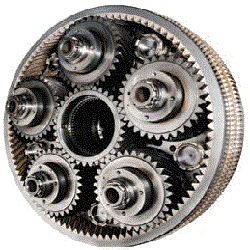
There is a centre gear called the sun gear, and the gears around this sun gears are called the planetary gears, and the outer ring with the internal gear toothing is called the ring Gear. Together it is called planetary gearbox or epicyclic gearbox. This type of gearbox has a huge scope in the automatic gear transmission industry such as automobiles.
Conclusion
We have discussed the different types of gears and their gear profiles and applications. If you have any further thoughts on this topic, let us know in the comment section below.

Thanks to sandar Dana.